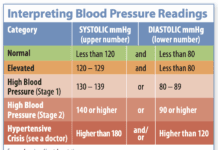Efforts to increase whole grains’ share of total grain consumption are slowly paying off, but most Americans still fall far short of targets for whole-grain intake. That’s the takeaway from an analysis of 2001-2012 national nutrition survey data published in Nutrition Journal. Researchers found that average adult consumption of whole grains increased from 0.72 ounce-equivalents per day in 2001-2002 to 0.97 per day in 2011-2012. But while 60% of adults met recommendations for total grain intake, only 8% got the recommended amount of whole grains. Children consumed even less whole grains and fewer than 1% got the recommended amount.
Eating more whole grains pays off, the study also found. Whole-grain consumption was associated with significantly better intakes of nutrients and dietary fiber, as well as with lower BMIs and smaller waist circumferences.






















